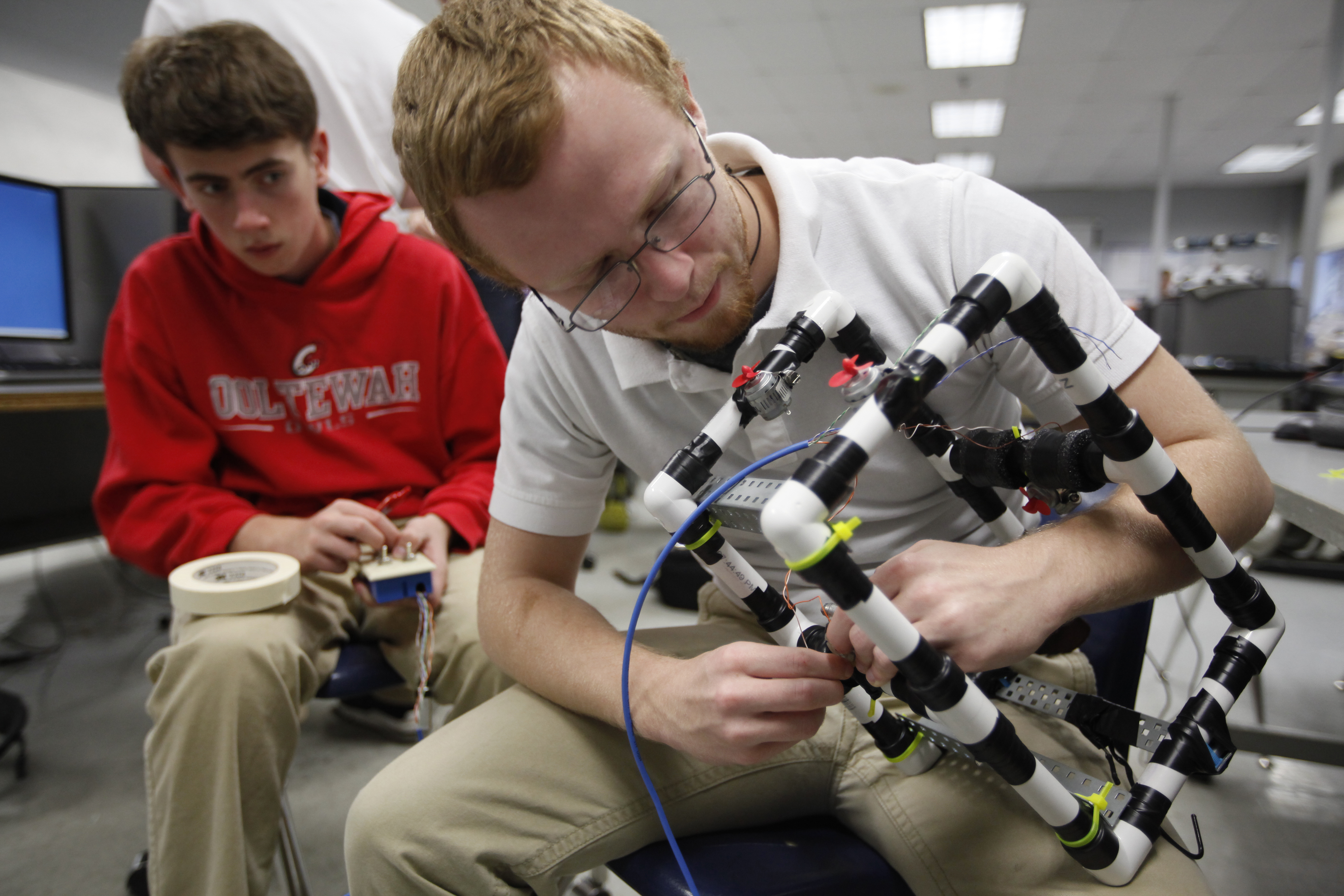Ooltewah students try underwater robots
Friday, January 1, 1904
The robots are a finicky bunch.
Everything about them is fragile and fleeting. PVC pipe connects tiny plastic propellers to soldered wires, which have been known to short out. The wires trace back to a panel of switches powered by 9-volt batteries that have a habit of losing their juice.
Getting the underwater robots to reach neutral buoyancy --where they hold still in the water without floating to the top or sinking to the bottom -- is as tedious and delicate a job as building a house of cards.
Once they reach the correct buoyancy, getting the little bots to drive where their operators want them to go isn't much easier.
Their course resembles that of a toddler-controlled toy car, as they spin in circles or make turns that are too wide or too sharp. The 5-foot plastic pool that holds an obstacle course for the bots might as well be the Atlantic Ocean.
"It's kind of like driving a boat. It's not precision driving," said Christine Donohue, an Ooltewah High School senior working on the robots as part of a computer-aided drafting course. Students were perfecting techniques for driving their completed bots last week -- a long process of trial and error.
"Building the bot is easy. But once you get it in the pool, there are no ideal conditions. So you just test and retest," Donohue said.
Lynda Pickett, who teaches drafting and engineering courses at Ooltewah High School, said she modeled the robot project after one in engineering classes at Tennessee Tech University. She gave each team of students eight feet of PVC pipe, eight joints, four motors and four propellers. Before starting, students drew designs of the robots on a 3D software program.
"All of this came out of their own heads. They designed it," Pickett said.
Because they're doing close to college-level work, Pickett said her students who go on to study engineering are often ahead of others because they already understand the basics of design.
"I get a lot of positive feedback from my students in college," she said. "They feel so much more ready than other students in their classes."
Her classes have designed and built everything from miniature bridges to roller coasters. Pickett's courses are part of Ooltewah's engineering academy and receive federal vocational education funding.
Senior Jose Quintero said the underwater bots were more involved and required much more patience than some other projects.
"There's so much to do with this," he said, as he added pebbles to his PVC pipes to weight his bot down. "You have to design the whole thing, test it, get it to drive."
Quintero plans to study biomedical engineering at the University of Tennessee at Knoxville. His love for engineering started at a young age, when he would become hypnotized by watching his father working on cars.
"It pretty much carried over from my childhood," he said. "I questioned everything."
Contact staff writer Kevin Hardy at khardy@timesfreepress.com or 423-757-6249.

